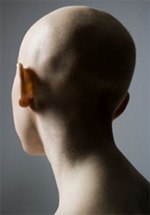Younger Women and Breast Cancer
- Breast Cancer in Young Women
- Breast Cancer in Younger Women
- Breast cancer in young women-Key facts about breast cancer in women in their 20s and 30s
- Breast cancer in younger women: coping with a diagnosis at 45 or under
- Breast Cancer in Your 20s & 30s
- 2017 International consensus guidelines for breast cancer in young women
- Breast Cancer in Young Women AFP
- Management of young women with early breast cancer
- Young Women and Breast Cancer Booklet
- Younger Women
- Breast Cancer in Younger Women

With high profile younger women such as Kylie Minogue, Jane McGrath and Belinda Emmett being diagnosed with breast cancer, many in the community have the incorrect perception that breast cancer is on the increase in younger women. In fact, breast cancer is still a rare occurrence in young women. Only around six per cent of all breast cancer cases are found in women under the age of 40. (18% are in women aged between 40 and 49 years) Of the 13,000 women diagnosed with breast cancer in Australia each year, only about 700 are aged under 40. The most recent Australian data shows the incidence rate of breast cancer has actually remained steady over the past 20 years in women under age 40, whilst the overall incidence has in fact increased quite significantly.
For women under the age of 40 years there are the special considerations of pregnancy, fertility and contraception, sexuality and body image, as well as familial and genetic issues. Other important issues of concern may include career and finances.
Breast cancers in women under the age of 40 years tend to be larger (median tumour size 2 cm in young women vs. 1.5 cm in older women), more advanced at diagnosis (more likely to be lymph node positive) and more aggressive (less well differentiated) than breast cancers in older women. Cancer in young women also has a higher mortality and shorter disease free survival than in older women, and is more likely to recur after treatment both locally and at distant sites. Women who are diagnosed with breast cancer at a younger age are more likely to have a mutated (altered) BRCA1 or BRCA2 gene.
Many younger women prefer active involvement in treatment decision making and research has shown that this is particularly the case for women with a higher level of education. Cancer 1995. Clinicians should offer detailed information about treatment options and seek women’s preferences.
What are the survival rates for younger women with breast cancer?
Overall survival from breast cancer has increased in recent years. The most recent data shows that about 90 per cent of women aged between 40 and 69 years at diagnosis will be alive five years after their diagnosis. However, for women younger than 40 years, survival is lower because their breast cancers are often larger at diagnosis and more aggressive. Of younger women diagnosed with breast cancer, about 82 per cent of those aged 20 to 29 years and 84 per cent of those aged 30 to 39 years will be alive five years after diagnosis.
 What are some of the issues for younger women with breast cancer?
What are some of the issues for younger women with breast cancer?
Younger women are likely to face particular issues because of their age and life stage. If you are younger than 40 when your breast cancer is diagnosed, you are likely to face different issues in your treatment and follow-up than older women with the disease. You might be concerned about the effects of treatment on your ability to have children, your sexuality or your body image, or you might be worried about what your diagnosis means for your future and for your family. When deciding about treatment, you will need to balance the benefits in terms of your survival with the effects of the treatment on your quality of life.
Treatments such as chemotherapy and hormonal therapies can have side effects on ovarian function including menopausal symptoms or infertility. These effects may be permanent or temporary. Osteoporosis is thinning of the bone that can lead to an increased risk of fracture. Although it usually occurs in older women who have been through the menopause, it is also an issue for younger women who have had treatment for breast cancer. This is because oestrogen plays an important part in keeping bones strong and without it your bones will be weakened. If you have been made post-menopausal by your treatment your oestrogen levels will be lowered and your risk of osteoporosis may have increased.
Breast surgery, radiotherapy, hormonal therapy and chemotherapy may have a significant effect on how women feel about their sexuality and body image. Younger women with breast cancer are also reported as having a higher risk for psychological distress, anxiety and depression.
 Diagnosis of Breast Cancer in Younger Women
Diagnosis of Breast Cancer in Younger Women
There are several ways in which the presentation of breast cancer may differ in women under the age of 40 years compared to its presentation in older women. The majority of young women with breast cancer present with symptoms. Older women are more likely than younger women to present with screen detected breast cancers because of established population mammographic screening in the over 50 age group.
There are several challenges in the diagnosis of breast cancer in young women. Clinical examination and breast imaging may be limited and this may contribute to a delay in diagnosis, which is more common in young women. Clinical breast examination is less sensitive in young women (but improves with increasing age); and breast cancer is rare in this group, whereas benign and physiological conditions of the breast are very common. As a result there is an inherently lower level of suspicion for cancer when assessing a young woman with breast symptoms.
Diagnosing breast cancer in younger women (under 40 years old) is more difficult because the breast tissue is generally denser/thicker than the breast tissue in older women. By the time a lump in a younger woman’s breast can be felt, the cancer is more often advanced.
Delays in diagnosing breast cancer may be a problem in younger women. Many younger women who have breast cancer ignore the warning signs, such as a breast lump, because they believe they are too young to get breast cancer. Many women assume they are too young to get breast cancer and tend to assume a lump is a harmless cyst or other growth. Some health care providers also dismiss breast lumps in young women as cysts and adopt a “wait and see” approach.
Mammography has much lower accuracy in women under 40 years of age compared with older women. This is partly due to the greater tissue (glandular) density in younger women which may obscure lesions, and partly due to the fact that proportionally more breast cancers in this group don’t have typical malignant features on mammography. A recent Australian series showed that only 54% of mammograms with cancer were reported as suspicious or malignant in women younger than 40 years compared to 70% in women over 40 years. Breast 2004.
Ultrasound in younger women is often considered the initial imaging test of choice, however, a proportion of cancers in young women will have benign sonographic features. It has been reported that 10% of malignant lesions in young women have features typical of, or consistent with, benign fibroadenomas, even in retrospect. A combination of the two imaging tests, mammography and ultrasound, is therefore often used to maximise imaging accuracy, especially in young women where there are significant clinical findings.
The difficulty in distinguishing benign from malignant lesions on clinical and imaging assessment in young women stresses the importance of triple assessment. The addition of fine needle aspiration biopsy or core biopsy to the clinical and imaging findings increases the chances of correctly diagnosing a malignant lesion, with well over 90% showing an atypical, suspicious, or malignant result on biopsy alone. While one report states that the accuracy of the triple test may be lower in young women than the 99-100% accuracy quoted for the general population, an Australian report shows that the triple test in young women is in line with reported estimates and approaches 100%. It is likely that most errors in diagnosis of breast cancer in young women result from falsely reassuring clinical and/or imaging findings. New palpable masses in women of any age should undergo imaging and biopsy to establish a diagnosis.
Should Women Under Age 40 have Regular Mammograms?
In general, regular screening mammograms in the absence of breast symptoms are not recommended for women under 40 years old, in part, because breast tissue tends to be more dense in young women, making mammograms less effective as a screening tool. In addition, most experts believe the low risk of developing breast cancer at a young age does not justify the radiation exposure of mammography. However, screening mammograms may be recommended for younger women with a family history of breast cancer and other risk factors.
 How is Breast Cancer Treated in Younger Women?
How is Breast Cancer Treated in Younger Women?
Treatment options for breast cancer treatment are the same in young women as they are for older women.The course of treatment for breast cancer at any age is based on the extent of the person’s disease including whether or not it has spread beyond the breast, as well as the woman’s general health and personal circumstances. Treatment options include surgery: either a lumpectomy, which involves removing the lump and some surrounding tissue, or a mastectomy, which is the removal of a breast. Breast reconstruction is an option available to most women who have a mastectomy. The options for breast reconstruction in younger women are the same as they are for older women. These include reconstruction using a breast implant or reconstruction using natural body tissue, often from the tummy. There are pros and cons for each type of reconstruction.
Sometimes one or the other is more suitable for you depending on your body shape, whether or not you are having radiotherapy or future pregnancy. Breast reconstruction can be done immediately (at the time the mastectomy is done) or delayed (at a later time). Once again, there are pros and cons for each approach Radiation therapy is almost always used following a lumpectomy and on occasions following mastectomy. Chemotherapy and/or hormone therapy are recommended after surgery to help destroy any remaining cancer cells and prevent recurrence. Adjuvant chemotherapy is usually recommended for women under the age of 40 years, as the absolute benefit they gain from chemotherapy is greater than for older women. The incidence of oestrogen receptor positive tumours is lower in younger women than it is in older women and hormonal therapy is not needed in this situation. Consideration of the needs of children and family is important for young women, and there is some evidence to suggest that women with dependants may be more willing to assume risks in treatments for even small potential increases in life expectancy
Breast Cancer During Pregnancy
Very few pregnant women are diagnosed with breast cancer. But because more women are choosing to have children later in life, and because the risk of breast cancer increases as women age, there may be more cases in the future. Today about 1 out of 3,000 pregnant women is diagnosed with breast cancer.
Breast cancer presenting during pregnancy may be more difficult to diagnose than breast cancer in the young non pregnant woman due to the hormonal effects of pregnancy on breast tissue. Young women who present with breast cancer during pregnancy tend to have larger, more advanced cancer at diagnosis.
Treatment options for breast cancer that presents during pregnancy depend on the gestational stage at diagnosis. While many women will assume that the pregnancy must be terminated, this is not necessarily the case as breast cancer can be treated successfully during pregnancy. Surgery may be performed at any gestation. It is a commonly held misconception that general anaesthesia significantly increases the risk of spontaneous abortion. While there may be a very small increase in risk to the foetus, this is not of clinical significance. The surgical options of breast conserving surgery and mastectomy are the same as for any breast cancer, with the same considerations of tumour size and location, breast size, likely cosmetic outcome, and patient preference.
Breast conserving surgery may be performed during pregnancy, but is generally not recommended in the first and second trimesters as adjuvant radiotherapy must be delayed until after delivery. The use of sentinel node biopsy during pregnancy has not been studied extensively. Some small studies suggest it may be safe.
Chemotherapy may be given during the second and third trimesters of pregnancy with some commonly used agents. The incidence of spontaneous abortion or birth defects associated with chemotherapy in the second and third trimesters is very low. Chemotherapy is contraindicated in the first trimester of pregnancy.
Breast Cancer During Pregnancy-BCC
Breast Cancer in Pregnancy- Komen
Pregnancy and Breast Cancer -RCOG
 Pregnancy after Breast Cancer
Pregnancy after Breast Cancer
While there is a theoretical concern that the hormonal effects of a pregnancy after breast cancer may cause relapse, the evidence does not support this. While fertility may be reduced, pregnancy following treatment for breast cancer does not increase the risk of relapse and is therefore not contraindicated. Some oncologists recommend delaying pregnancy for a period of 2 years as particularly aggressive disease may relapse in that time, but there is no evidence that a delay is required. Women with hormone-positive breast tumours are usually advised to stay on tamoxifen for five years after their initial treatment. Because of potential side effects to the foetus, they are advised not to conceive while taking the drug. For a woman in her late thirties, five years could be her entire remaining fertility window.
Breastfeeding from a breast previously treated for cancer is not usually possible as radiotherapy diminishes the ability of the breast to produce milk. Successful breastfeeding from one breast may be possible. The untreated breast will usually enlarge with pregnancy and lactation but the treated breast may not.
The difficult areas for discussion are timing of a pregnancy and whether pre-pregnancy metastatic screening tests such as a computerised tomography and bone scan should be performed. Before a pregnancy, other sensitive issues about the amount of family support available if the mother subsequently relapses or dies from the cancer need to be discussed.
Premature Menopause and Loss of Fertility
Fertility Choices- A Decision Aid for Younger Women with Breast Cancer
Fertility and breast cancer treatment-BCC
Fertility and Women with Cancer-ACS
Fertility, Pregnancy and Breast Cancer
Premature menopause and loss of fertility are significant considerations in young women undergoing treatment for breast cancer. The risk of menopause with chemotherapy is dependent on age and the intensity of chemotherapy. The likelihood of menopause following chemotherapy increases with increasing age. A woman who has chemotherapy at age 30 years is unlikely to become menopausal with treatment; at age 35 the risk is around 18%, and at age 40 years the risk is around 40%.
If future childbearing is planned, the option of using assisted reproduction techniques before chemotherapy and hormone therapy should be considered. Generally, this is more successful if the woman has a partner so that embryos (rather than eggs/oocytes) can be frozen for future use following one or more cycles of in-vitro fertilisation.
 Genetic Issues
Genetic Issues
Young women who develop breast cancer are more likely than older women to have an affected first degree relative. While only about 5% of all breast cancer occurs in women who carry a heritable mutation in genes such as BRCA1 or BRCA2 (ie are ‘gene mutation positive’), women who develop breast cancer at a young age are more likely to carry a mutation than women who develop breast cancer later in life. If a young woman with breast cancer has other relatives who have breast or ovarian cancer, or has other risk factors for a genetic mutation in the family (Ta it may be appropriate to refer her to a family cancer clinic for assessment. Genetic testing may be recommended.
Options for treating breast cancer in women who are carry a BRCA1 or BRCA2 gene mutation are the same as for women who do not carry a mutation. However, knowledge that a woman carries a gene mutation implies a high risk of cancer developing in the opposite (contralateral breast or in the ovary/fallopian tube), and this may affect treatment choices. For example, she may elect to have her cancer treated with mastectomy rather than conservation, as she may be also considering risk reducing mastectomy to decrease the risk of contralateral breast cancer. She may also consider the option of removal of the ovaries and fallopian tubes (bilateral salpingo-oophorectomy- BSO) to further reduce her risk of breast cancer as well as decrease her risk of developing ovarian cancer. Such an approach may also play a role in the adjuvant therapy of a hormone receptor positive breast cancer.
 Psychological Factors
Psychological Factors
Evidence has shown that the psychological impact of breast cancer diagnosis and treatment is greater in young women than in older women. Younger women often suffer from a worse body image and have more ‘negative feelings’ such as guilt, sadness, anger and frustration than older women following treatment for breast cancer. Problems in sexual functioning such as lack of interest, inability to enjoy sex and difficulty with arousal and orgasm are more common in breast cancer survivors than in women without a history of breast cancer. Some of these symptoms may occur as a direct result of treatment such as the menopausal effects of chemotherapy. Some women may feel a ‘loss of womanhood’ and feel more vulnerable after having breast cancer and this may translate into difficulty in sexual functioning.
Young women may therefore require more support during their treatment than older women. Young women are often faced with additional difficulties such as dealing with young children, dealing with issues related to future fertility, and continuing to work during cancer treatment.

As a younger woman with breast cancer you should:
- Receive treatment and care from health professionals who are familiar with and sensitive to the specific issues and concerns that you may face as a younger women with breast cancer. You are probably best served seeing a specialist breast surgeon who works as part of a multidisciplinary team with access to all disciplines, including a fertility specialist, plastic surgeon and geneticist to ensure that all the special issues such as those outlined below are dealt with in a timely fashion. Timing of information is important. Fertility discussions especially need to be prioritized and considered soon after diagnosis and before chemotherapy.
- Be given an explanation of the risk of menopausal irregularity or early menopause as a result of some treatments. You should also be given advice on coping with an early menopause or the menopausal side effects of treatment.
- Be given a full explanation during initial treatment discussions about the possible impact of treatment on fertility. This should include advice about contraception and pregnancy after treatment.
- If appropriate, be given full information about any possibilities for preserving fertility. This should include information about chances of success from fertility treatment and the possible impact of delaying breast cancer treatment.
- Be fully informed of the potential impact some treatments may have on your bone health and advised of possible management strategies to minimise this impact.
- Have a full family history taken with respect to cancer risk. If appropriate you should be offered a referral to a genetic service for counselling +/-genetic testing.
- Breast Care Network Australia (BCNA) has a very useful, comprehensive list of resources for young women on their website.
- Attached is an additional list of resources for young women compiled by the Victorian Cooperative Oncology Group (VCOG).
You will need the Adobe Reader to view and print these documents.![]()











